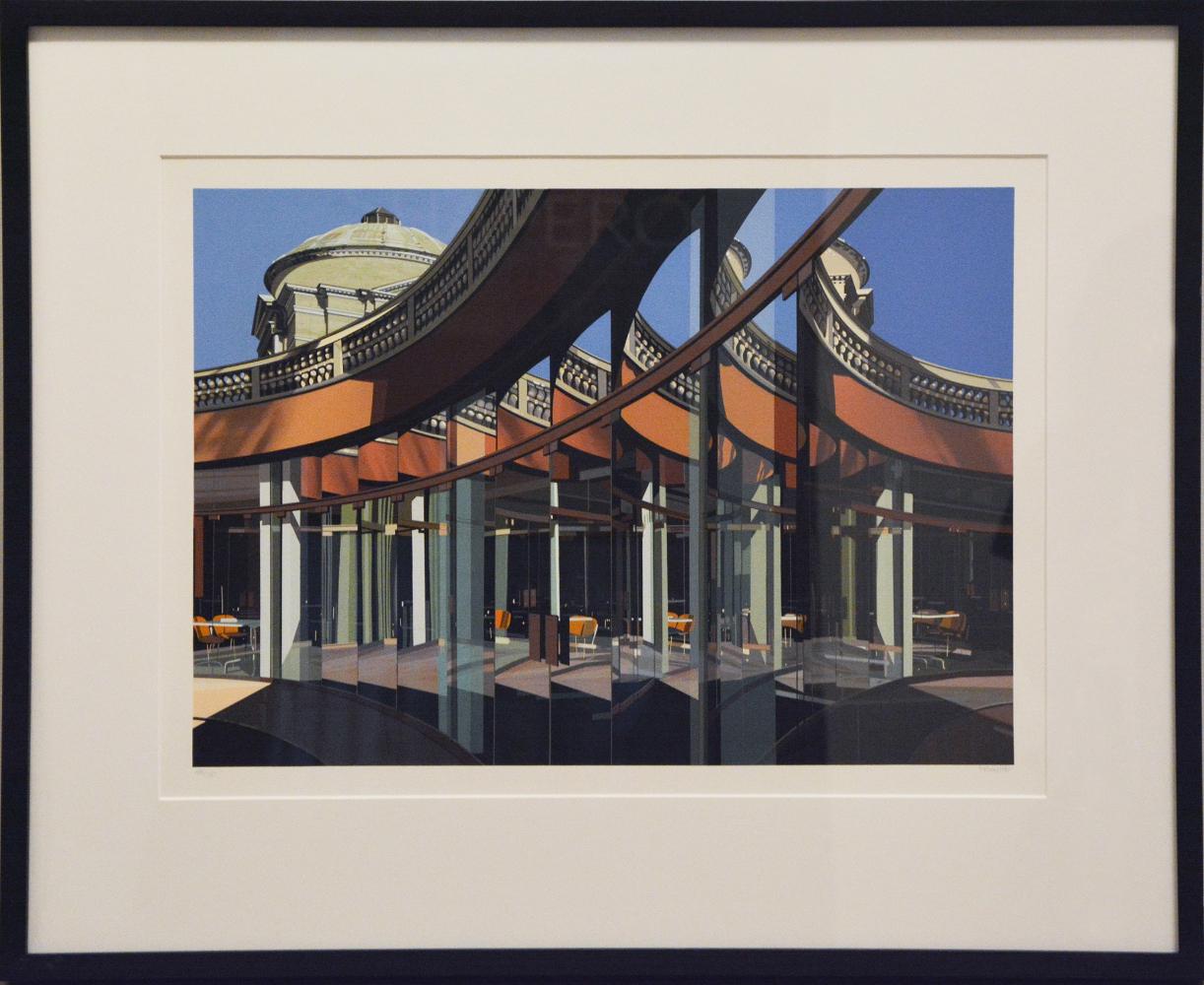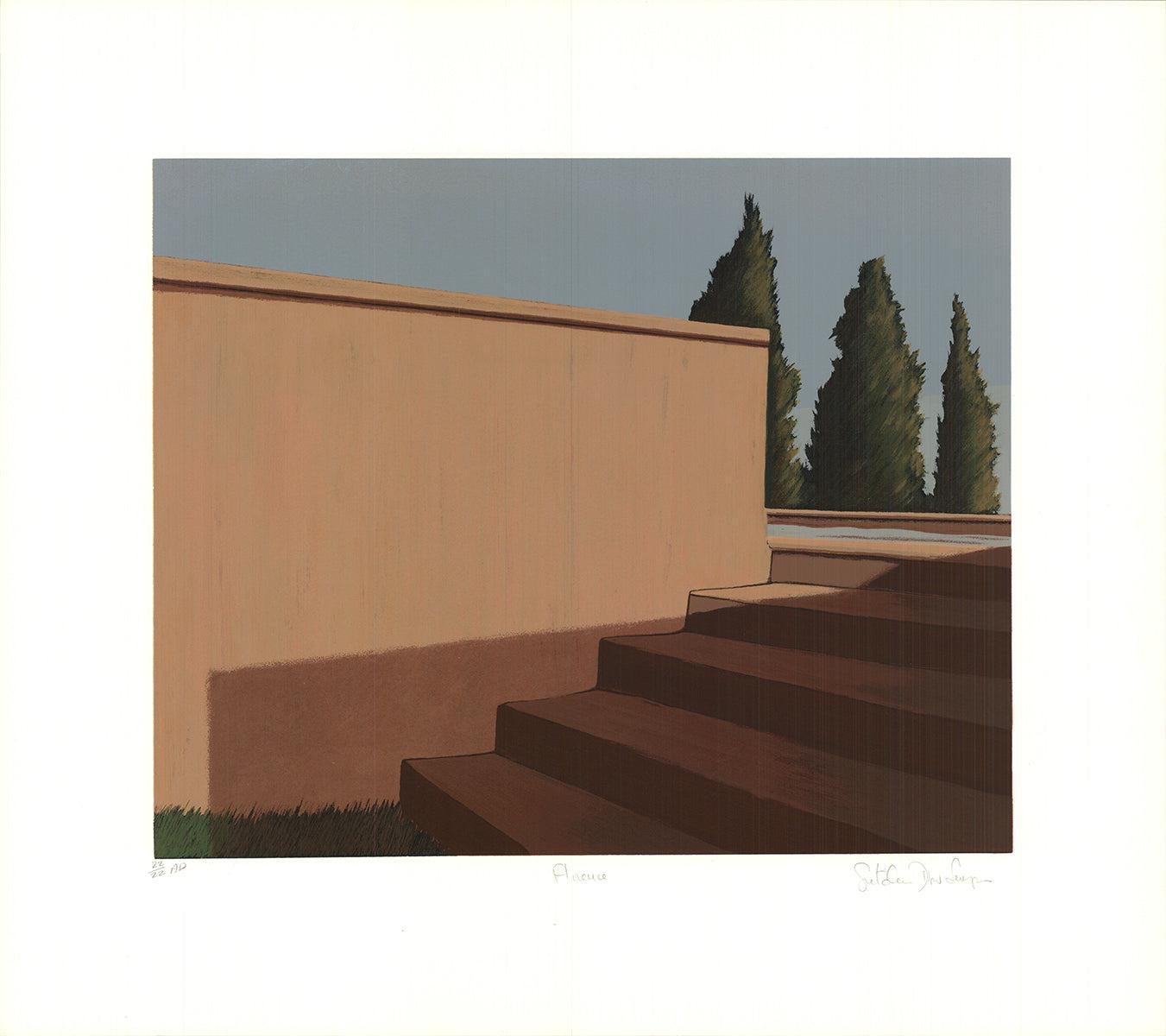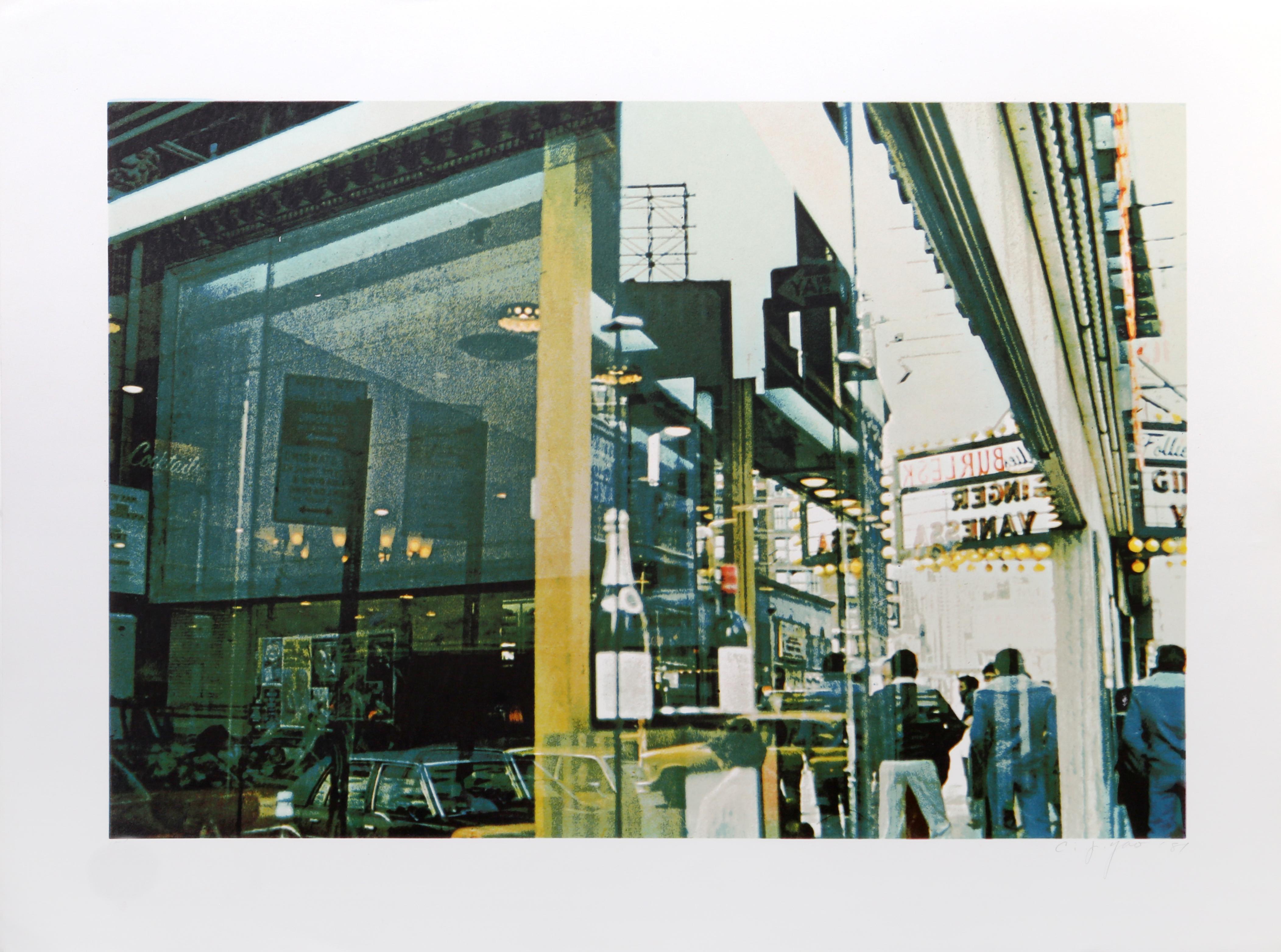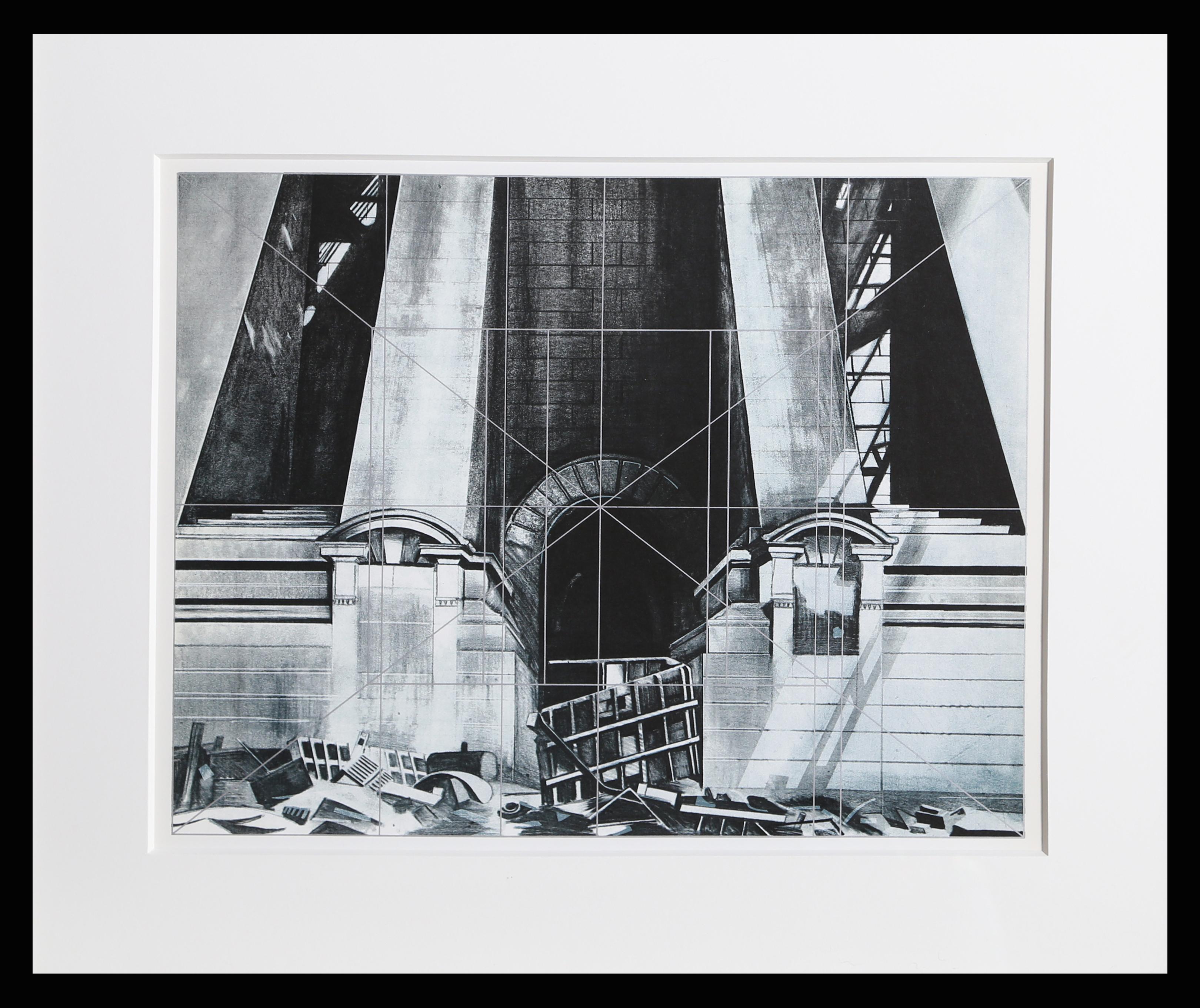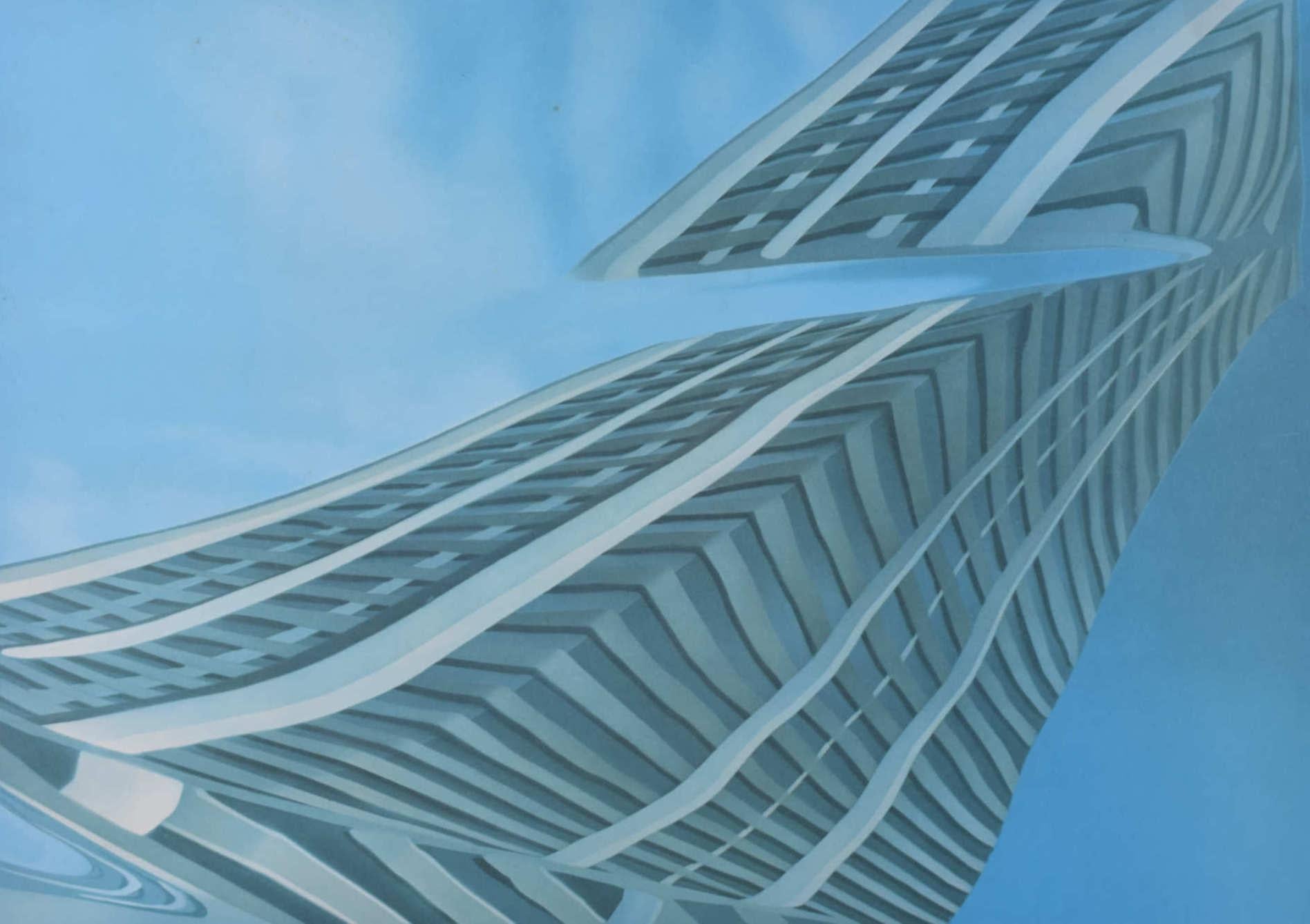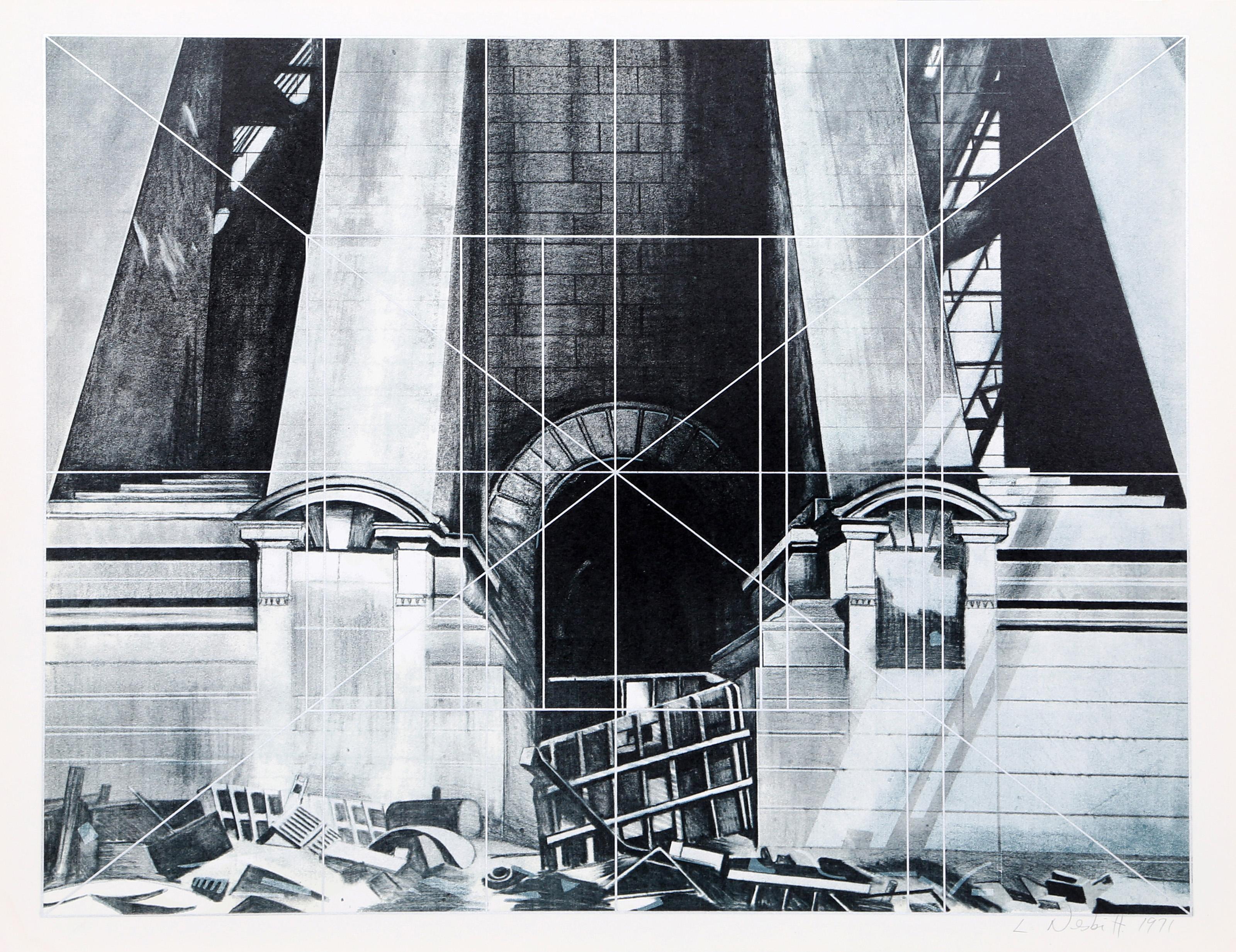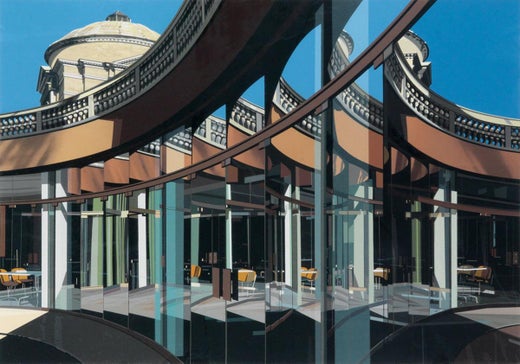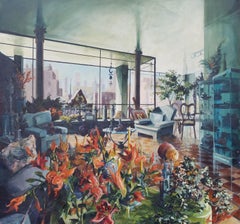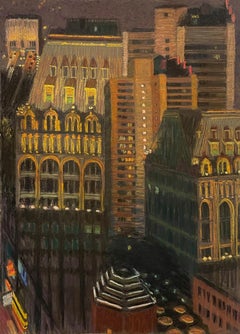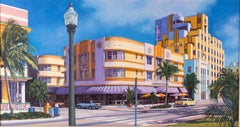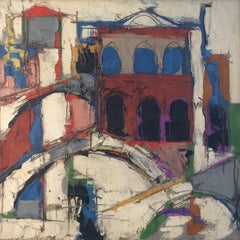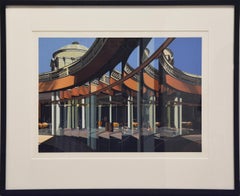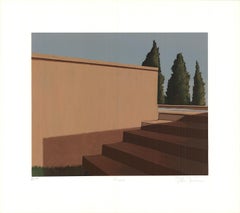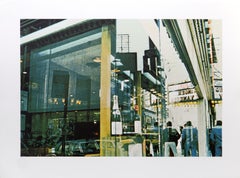Items Similar to "Roma (from Urban Landscapes III)" Richard Estes, Photorealist Screenprint
Want more images or videos?
Request additional images or videos from the seller
1 of 7
Richard Estes"Roma (from Urban Landscapes III)" Richard Estes, Photorealist Screenprint1981
1981
$6,000
£4,528.04
€5,183.92
CA$8,461.99
A$9,290.21
CHF 4,846.72
MX$112,424.46
NOK 60,746.13
SEK 57,238.83
DKK 38,696.55
About the Item
Richard Estes
Roma (from Urban Landscapes III), 1981
Signed and numbered "33/250" in pencil, lower margin
Color screenprint on white wove paper
14 x 20 inches
Edition 33/250
Richard Estes is considered the foremost practitioner of the international group of artists known loosely as photorealists and has been celebrated for more than forty-five years as the premier painter of American cityscapes. A master of contemporary realism, Estes is primarily known as a painter of urban scenes.
Estes stayed true to the photographs he used: when his paintings include stickers, signs, and window displays, they are always depicted backwards because of the reflection. His work rarely included litter or snow around the buildings because he believed these details detract from the buildings themselves. The paintings are always in daylight, suggesting "vacant and quiet Sunday mornings." Estes' works strive to create convincing three-dimensionality on a two-dimensional canvas. His work has been described in terms ranging from super-realism, sharp-focus realism, neo-realism, photo-realism, to radical realism. Estes' paintings from the early 1960s are typically of city dwellers engaged in everyday activities. Around 1967, he began to paint storefronts and buildings with glass windows and their reflected images. The paintings were based on Estes' color photographs, which captured the evanescence of the reflections, changing with the lighting and the time of day.
Estes paintings were based on multiple photographs of the subject. He avoided famous New York landmarks. His paintings provided fine details that were invisible to the naked eye, and gave "depth and intensity of vision that only artistic transformation can achieve." While some alteration was done for the sake of aesthetic composition, it was important to Estes that the central and the main reflected objects be recognizable, and that the evanescent quality of the reflections be preserved. He had a one-man show in 1968 at the Allan Stone Gallery. His works have been exhibited at the Metropolitan Museum of Art, the Whitney Museum, the Thyssen-Bornemisza Museum, and the Solomon R. Guggenheim Museum. In 1971, Estes was granted a National Council for the Arts fellowship. The same year, he was elected into the National Academy of Design as an Associate member, and he became a full Academician in 1984.
- Creator:Richard Estes (1932, American)
- Creation Year:1981
- Dimensions:Height: 14 in (35.56 cm)Width: 20 in (50.8 cm)
- More Editions & Sizes:Edition 35 of 250Price: $6,000
- Medium:
- Movement & Style:
- Period:
- Condition:
- Gallery Location:New York, NY
- Reference Number:1stDibs: LU1841215196172
Richard Estes
Richard Estes is a photorealist painter renowned for his meticulous attention to detail and invisible brushwork. He was born in Kewanee, Illinois, on May 14, 1932. From 1952 to 1956, Estes studied fine art at the Art Institute of Chicago. He relocated to New York after graduating and worked for the next 10 years as a commercial artist for various publishers in New York and Spain. By 1966, the artist had saved up enough money to paint full time. In the 1960s, Estes and his contemporaries, including painter Chuck Close and sculptor Duane Hanson, helped photorealism emerge from modern art movements such as pop art and minimalism. His paintings are reproductions of photographs he takes of urban landscapes, most of which are realistic representations of Manhattan, with few to no people on the streets and sidewalks. He often exaggerates the detail in his imagery by using mirrored objects and reflections. During the 1970s, Estes was chosen three times to represent the United States at the Bienniales in Venice and Basel. He also received the MECA Award for Achievement as a Visual Artist from Maine College of Art. In 1971, Estes was granted a fellowship with the National Council for the Arts. His work has been included in exhibitions in numerous museums around the world including the Museum of Art and Design in New York; the Museo Thyssen-Bornemisza in Madrid, Spain; the Nelson-Atkins Museum of Art in Kansas City, Missouri; the Isetan Museum of Art in Tokyo, the Museum of Art in Osaka, and the Hiroshima City Museum of Contemporary Art in Japan; the Sert Gallery, Carpenter Center for the Visual Arts, Harvard University in Cambridge and Museum of Fine Arts, Boston in Massachusetts; the Hirshhorn Museum and Sculpture Garden in Washington, D.C.; and the Museum of Contemporary Art in Chicago, Illinois, among others. Estes’ work can also be found in numerous public collections including those of the Albright-Knox Art Gallery in Buffalo, New York; the Art Institute of Chicago, Illinois; the Butler Institute of American Art in Youngstown, Ohio; the Crystal Bridges Museum of American Art in Bentonville, Arkansas; the Detroit Institute of Arts in Michigan; the Fine Arts Museum of San Francisco, California; the High Museum of Art in Atlanta, Georgia; the Indianapolis Museum of Art in Indiana; the J.P. Morgan Chase Art Collection, the Metropolitan Museum of Art, the Museum of Modern Art, the Solomon R. Guggenheim Museum and the Whitney Museum of American Art in New York; the Modern Art Museum of Fort Worth, Texas; the National Gallery of Art and Smithsonian American Art Museum in Washington, D.C.; the National Gallery of Australia in Canberra; the Philadelphia Museum of Art in Pennsylvania; the San Francisco Museum of Modern Art in California; the Tate Gallery in London, England; the Tehran Museum of Contemporary Art in Iran; the Brooklyn Museum of Art in New York; the Walker Art Center in Minneapolis, Minnesota; and the Yale University Art Gallery in New Haven, Connecticut.
About the Seller
5.0
Platinum Seller
Premium sellers with a 4.7+ rating and 24-hour response times
Established in 2022
1stDibs seller since 2022
122 sales on 1stDibs
Typical response time: <1 hour
- ShippingRetrieving quote...Shipping from: New York, NY
- Return Policy
Authenticity Guarantee
In the unlikely event there’s an issue with an item’s authenticity, contact us within 1 year for a full refund. DetailsMoney-Back Guarantee
If your item is not as described, is damaged in transit, or does not arrive, contact us within 7 days for a full refund. Details24-Hour Cancellation
You have a 24-hour grace period in which to reconsider your purchase, with no questions asked.Vetted Professional Sellers
Our world-class sellers must adhere to strict standards for service and quality, maintaining the integrity of our listings.Price-Match Guarantee
If you find that a seller listed the same item for a lower price elsewhere, we’ll match it.Trusted Global Delivery
Our best-in-class carrier network provides specialized shipping options worldwide, including custom delivery.More From This Seller
View All"Tuesday - 8 O'clock, " Frank Boros, View of Manhattan Skyline, New York City
Located in New York, NY
Frank J. Boros (1943 - 2017)
Tuesday - 8 O'clock
Oil on canvas
48 x 51 inches
Signed lower right
Accompanied by original purchase invoice and letter from the artist.
Provenance:
T...
Category
1990s Contemporary Landscape Paintings
Materials
Canvas, Oil
"From World Trade Center: Mixed Heights", Yvonne Jacquette, New York City Scene
By Yvonne Jacquette
Located in New York, NY
Yvonne Jacquette
From World Trade Center: Mixed Heights, 1997-98
Pastel on paper
30 x 22 inches
Yvonne Jacquette was born on December 15, 1934 in Pittsburgh, Pennsylvania and grew ...
Category
1990s Modern Landscape Paintings
Materials
Paper, Pastel
"The Cardozo, Miami Beach, Florida, " Kathleen Piunti, Sunny Street Scene
Located in New York, NY
Kathleen Piunti (1928 - 2016)
The Cardozo, Miami Beach, Florida, 1995
Oil on canvas
32 x 60 inches
Signed lower right
Provenance:
Uptown Gallery, New ...
Category
1990s Photorealist Landscape Paintings
Materials
Canvas, Oil
$11,000 Sale Price
44% Off
"Venice Canal, Italy" Claude Venard, French Post-Cubist Mid-Century Modern
By Claude Venard
Located in New York, NY
Claude Venard (French, 1913 - 1999)
Venice Canal, Italy, circa 1950-55
Oil on canvas
24 x 24 inches
Signed lower center
Provenance:
Private Collection, Massachusetts
The authenticity of this work has been confirmed by Galerie Felix Vercel.
Claude Venard was a notable exponent of the French mid-century post-Cubist movement. He was born to bourgeois parents from Burgogne in Paris, on March 21, 1913. At the age of 17, he enrolled and attended the Ecole des Beaux-Arts, but remained for only two days, not adhering to the school's academic style. Instead, he spent the following six years at the École des Arts Appliqués, taking evening classes and embracing the contemporary Parisian art scene, all the while becoming recognized in its circles.
Not able to support himself as an artist, by 1936 he found employment as a restorer at the Louvre, further honing his artistic skills.
Paris of the period was dominated by an art trend that strongly favored abstraction. Following a group show at the Galerie Billet-Worms in 1935, art critic Waldemar George declared: "Let's be young again! Painting is not dead… Its course has not stopped. Forces Nouvelles is born."
Venard contributed and initially adhered to the strict disciplines of the Forces Nouvelle group. But as with many of his fellow members, he soon abandoned it seeking individual expression.
Following WWII, Venard rekindled friendships with past Forces Nouvelles members, joining Pierre Tal-Coat, André Marchand, André Civet...
Category
1950s Cubist Landscape Paintings
Materials
Canvas, Oil
"Montmartre Street Scene, Paris, France" Thomas Pradzynski, Architecture
By Thomas Pradzynski
Located in New York, NY
Thomas Pradzynski (1951 - 2007)
Montmartre Street Scene, Paris, France
Oil on canvas
16 x 32 inches
Signed lower right
At the age of 26 Thomas Prad...
Category
Late 20th Century Contemporary Landscape Paintings
Materials
Canvas, Oil
$9,600 Sale Price
20% Off
"10th Avenue, Meatpacking District" Harry McCormick, New York City Urban Scene
By Harry McCormick
Located in New York, NY
Harry McCormick
10th Avenue, Meatpacking District, New York
Signed lower right
Oil on masonite
23 7/8 x 15 inches
Renowned for his exquisite depiction of light and shadow, Harry Mc...
Category
1970s Contemporary Landscape Paintings
Materials
Masonite, Oil
You May Also Like
Urban Landscapes No. 3
By Richard Estes
Located in London, GB
The complete set of eight screenprints in colours, 1981, on Fabriano Cotone paper, with full margins, signed and numbered from the edition of 50 in pencil (there were also 15 artist'...
Category
1980s Photorealist Landscape Prints
Materials
Screen
$37,498 Sale Price
24% Off
1992 Gretchen Dow Simpson 'Florence, Italy' USA Serigraph
By Gretchen Dow Simpson
Located in Brooklyn, NY
Florence, Italy is an exquisitely crafted 24-color silkscreen print by renowned American artist Gretchen Dow Simpson, celebrated for her architectural precision and serene, minimalis...
Category
1990s Realist Prints and Multiples
Materials
Screen
Downtown Houston, Photorealist Screenprint by CJ Yao
By Ching Jang Yao
Located in Long Island City, NY
Liquor Store Reflection by C.J. (Ching-Jang) Yao, Taiwanese (1941–2001)
Date: 1981
Screenprint, Signed and numbered in pencil
Edition of 250
Size: 22 in. x 30 in. (55.88 cm x 76.2 cm)
Category
1980s Photorealist Landscape Prints
Materials
Screen
Barriers, Photorealist NYC Screenprint by Lowell Nesbitt
By Lowell Nesbitt
Located in Long Island City, NY
Barriers by Lowell Blair Nesbitt, American (1933–1993)
Date: 1972
Screenprint
Edition of 3000, unsigned
Image Size: 12.5 x 16.5 inches
Size: 14 x 18 in. (35.56 x 45.72 cm)
Frame Size...
Category
1970s Photorealist Landscape Prints
Materials
Screen
Knightsbridge Barracks, Hyde Park, London 1970s screenprint by Brendan Neiland
By Brendan Neiland
Located in London, GB
Brendan Neiland (b.1941) R.A. (Expelled)
Hyde Park Barracks (1979)
Screenprint
35 x 51 cm
Signed, titled, dated and numbered 153/300 in pencil.
A print of the facade of Hyde Park B...
Category
1970s Landscape Prints
Materials
Screen
Barriers, Photorealist Screenprint on Paper by Lowell Nesbitt
By Lowell Nesbitt
Located in Long Island City, NY
Photorealist cityscape screenprint by American artist Lowell Blair Nesbitt, signed and numbered in pencil
Barriers
Lowell Blair Nesbitt, American (1933–1993)
Date: 1971
Screenprint,...
Category
1970s Photorealist Landscape Prints
Materials
Screen
More Ways To Browse
Mary Cassatt Etchings
Matisse Signed Print
Max Baer
Max Beckmann Drypoint
May Belfort
Melanie Taylor Kent
Mexican Revolution Art
Michel Delacroix On Sale
Munch Poster 1969
Naoko Matsubara
Nude At The Window Dali
Nursery Rhyme Prints Vintage
Oil Paintings From 1964
Opie Lenticular
Original Pears Prints Antique
Pablo Picasso Sculpteur
Paris Street Scenes Prints
Paul Klee Etchings
